QR codes have become an integral part of modern technology, providing a seamless way to connect the physical and digital worlds.
They are used in various applications, from marketing campaigns to contactless payments, and have seen a significant rise in popularity in recent years. The QR code trend has impacted numerous industries, including marketing, consumer goods, hospitality, real estate, and finance.
Introduction to QR codes
QR codes, or Quick Response codes, have become a cornerstone of modern digital communication and interaction. Initially designed to track vehicles during manufacturing, QR codes have transcended their industrial origins to become a global phenomenon in various sectors including marketing, digital payments,, and service delivery.
What is a QR code?
A QR code consists of a matrix of squares that can store digital information, which can be accessed by scanning the code with a smartphone camera.
The design of QR codes allows them to hold a significantly larger amount of data than traditional barcodes, including URLs, contact information, or text. This capability makes them highly versatile and useful in a connected world.
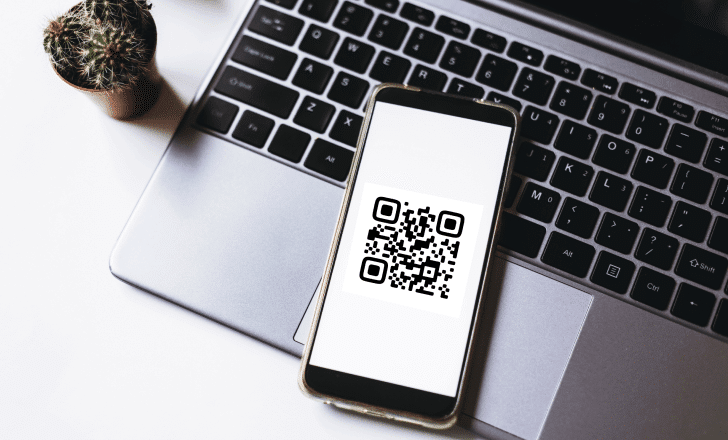
The basic technology behind QR codes
At its core, QR code technology involves encoding information into a compact, square pattern that can be easily read by an optical device like a smartphone camera.
The code consists of black modules arranged in a square grid on a white background, which can be decoded rapidly.
This efficiency in storing and transmitting information is due to the code’s ability to be read from any angle and its error correction capability, which ensures data integrity even if the code is partially obscured or damaged.
The basic structure of a QR code includes three distinct squares at the corners that help the scanner identify the code’s orientation and smaller cells or pixels that encode the data.
QR codes’ versatility is enhanced by their ability to be customized in design while still maintaining functionality, allowing businesses to embed logos or other branding elements.
QR codes bridge the physical and digital worlds, creating a seamless user experience by connecting physical objects or locations to digital resources with just a quick scan.
This instant access to digital content without the need to type URLs or navigate through multiple steps is a primary driver of their popularity.
Through this introduction, we’ve laid the groundwork for understanding the basic nature and technological underpinnings of QR codes.
In subsequent sections, we’ll examine their applications and implications and explore how these features contribute to their growing use and popularity across various domains.
Current popularity
QR codes have rapidly moved from niche technology to mainstream adoption, thanks in part to their flexibility and utility in various scenarios—from quick payments to accessing restaurant menus. Their increasing visibility and usage globally raise the question: Just how popular are QR codes today?
Are QR codes trendy?
Undoubtedly, QR codes are experiencing a resurgence in popularity. This trend is fueled by the growing ubiquity of smartphones and the need for contactless solutions, especially highlighted by recent global health concerns.
Businesses and consumers alike are finding QR codes to be an essential tool for safe and efficient interaction.
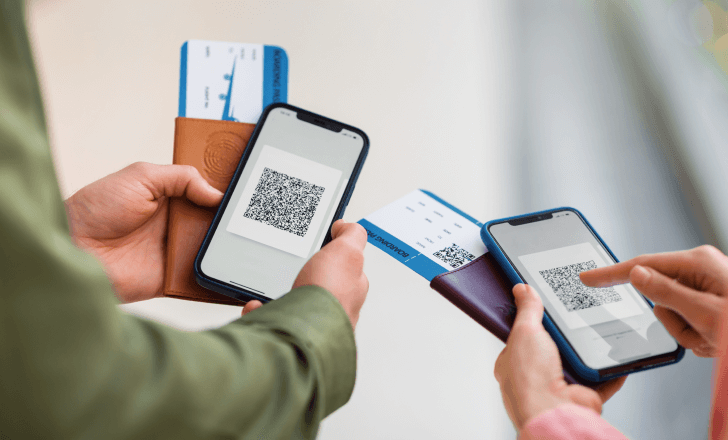
QR code statistics: How many are scanning?
Recent statistics reveal that the scanning of QR codes has seen exponential growth. QR code scans have surged globally, with a significant percentage of smartphone users having scanned a QR code at least once. Many users report regular use for various purposes, including accessing product information, reviews, payment transactions, and health data management.
This widespread use underscores the practicality and ease of QR codes, propelling their adoption further.
Global QR code usage: A snapshot
Globally, QR code usage varies with broad adoption in Asia, where countries like China and Japan have integrated QR codes deeply into daily transactions and social interactions. In Western countries, adoption has been accelerating, driven by retail, marketing, and health sectors adopting QR codes for a touch-free interface.
The global perspective shows a clear trend toward integrating QR code technology into everyday life, signaling a shift towards more digital and contactless methods of interaction.
Consumer preferences: Why people like QR codes
Consumer preferences for QR codes stem from their convenience and speed. Scanning a QR code is often faster than typing or navigating through an app.
Furthermore, QR codes can enhance user experience by providing immediate access to enhanced content, such as instructional videos, detailed product specifications, and interactive menus, which enrich the user’s interaction with the product or service.
The ability to quickly access information and perform tasks efficiently makes QR codes highly appealing in our fast-paced world.
This section highlighted the current popularity of QR codes, supported by statistics and global usage trends.
The appeal of QR codes is rooted in their simplicity and the seamless integration they offer between the physical and digital worlds, characteristics that have led to their widespread adoption and the perception that they are indeed trendy.
As we explore their specific applications and advantages in the following sections, we will gain a deeper understanding of why QR codes are bec

oming indispensable in modern society.
Why are QR codes gaining popularity?
The resurgence and growing popularity of QR codes can be attributed to several key factors. These encompass technological advancements, shifting consumer behaviors, and a broader acceptance of digital solutions in everyday interactions.
Ease of QR code scanning
One of the most significant drivers of QR code popularity is the sheer ease of use. Consumers scan QR codes for various purposes including payments and information retrieval. Most modern smartphones are equipped with cameras capable of scanning QR codes without the need for an additional app.
This accessibility allows for smartphone users to interact with QR codes almost instantaneously—simply point and scan. This convenience is a major factor in user adoption, as it eliminates barriers to access information or services.
QR code payments: Simplifying transactions
QR code payments have revolutionized the financial transaction landscape by offering a fast, secure, and contactless method of payment. Consumers can make purchases or transfer funds simply by scanning a QR code linked to their bank or payment service, bypassing the need for physical cards or cash.
This method has seen particularly rapid growth in regions with high mobile penetration and robust digital payment infrastructures, contributing significantly to the global spread of QR code technology.
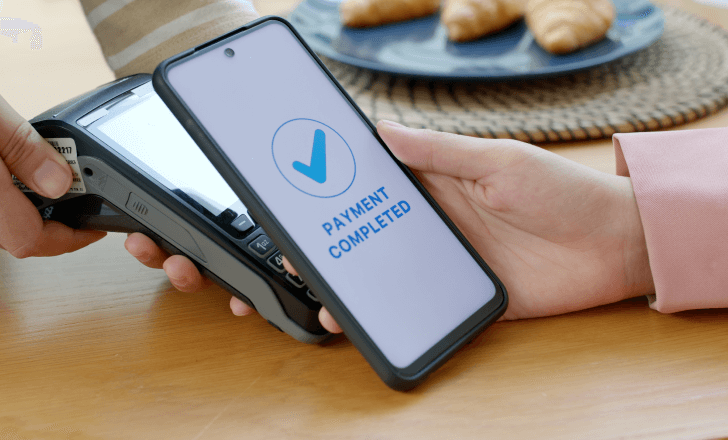
Interactive menu QR codes: Revolutionizing dining
The restaurant industry has adopted QRs en masse, particularly for providing interactive digital menus. This usage spiked as a direct response to health and safety concerns, reducing the need for physical menus and minimizing contact points.
Customers can scan a QR code placed on a table or at a restaurant entrance to view menus, place orders, and even pay—all from their own devices. This convenience and added safety measure have made QR codes a preferred choice for dining experiences.
QR code labels market: A growth analysis
The QR code labels market is expanding as businesses recognize QR codes as a powerful tool for engagement. QR codes are being integrated into product packaging, allowing companies to offer more than just static information.
Consumers scanning these codes can access a wealth of additional content such as usage tips, product origin stories, and promotional videos, enhancing the consumer experience and building brand loyalty.
Marketing QR codes: Engaging consumers
Marketing strategies have been significantly enhanced with QR codes, allowing for innovative campaigns that engage consumers directly.
From billboards and flyers to social media and television ads, QR codes are used to bridge the gap between advertising and consumer action. They offer a unique opportunity for marketers to connect with audiences in a measurable, interactive manner, and track engagement and conversion metrics more effectively.
The growing popularity of QR codes is a reflection of their adaptability and utility across various sectors. As technology advances and consumer preferences evolve towards more streamlined and contactless interactions, QR codes meet these demands effectively, paving the way for continued growth and integration into daily life.
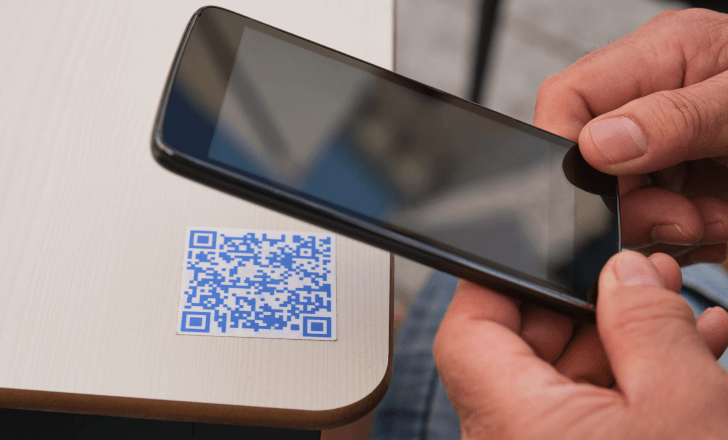
Applications of QR codes
The utility of QR codes extends across a broad spectrum of industries and functions, demonstrating their versatility and integral role in enhancing user experiences and operational efficiencies. From everyday personal use to sophisticated commercial and industrial applications, QR codes are proving to be an indispensable tool in the digital age.
QR code usage in daily life
QR codes are found in a multitude of everyday scenarios. Consumers use them to access digital menus, download apps, check-in at venues, and even navigate public transport systems. QR codes simplify the process of retrieving information without the need for typing URLs or conducting searches, making them especially useful in fast-paced environments.
QR code based services: What’s available?
A wide array of services now leverage QR code technology to enhance accessibility and convenience. These include library systems where users can download e-books, parking meters that allow for mobile payments, and even government services providing quick access to forms and public information.
Healthcare has also adopted QR codes for patient check-ins and accessing health records, reflecting the technology’s potential to streamline complex processes.
Unique uses: Find QR codes in unexpected places
QR codes are also popping up in unexpected places, offering creative and unique ways to engage with environments and products.
For example, museums use QR codes next to exhibits to provide visitors with more in-depth information or interactive content. In real estate, QR codes on sale signs can give potential buyers instant access to property details, photos, and contact information.

Smart packaging: QR codes in global smart packaging market
In the global smart packaging market, QR codes add value beyond simple branding. They can track the journey of a product from production to delivery, provide consumers with freshness data, and offer interactive experiences that boost engagement. This application not only enhances consumer trust but also aids in the authenticity and safety of the product by providing traceable data.
The applications of QR codes are vast and varied, demonstrating their adaptability and effectiveness in bridging the gap between physical and digital spaces. As businesses continue to explore innovative ways to use this technology, QR codes are set to become even more embedded in our daily routines, transforming how we interact with the world around us.
Through their dynamic and multifaceted uses, QR codes not only enhance user experiences but also drive business efficiencies, making them a pivotal component in today’s digital landscape.
Technological aspects
QR codes are more than just simple tools for accessing web content—they embody a blend of advanced technology and practical application that make them vital in today’s digital-driven society. Understanding the underlying technology helps in appreciating their broad applicability and potential for future innovations.
QR code creation and generation
The process of QR code generation starts with determining the type of content it will encode—whether a URL, a string of text, a phone number, or something else. The increase in the number of QR codes generated year-on-year highlights the growing significance of this technology.
Advanced algorithms determine the most efficient way to store this data within the confines of the QR matrix, optimizing space and ensuring readability. Tools and platforms for generating QR codes, such as QR code generator online and bespoke software solutions, offer users the ability to create customized QR codes infused with logos, colors, and other branding elements without compromising QR code scanning.
AI generated QR codes: The next level
Artificial intelligence (AI) is enhancing QR code technology by enabling dynamic and context-aware QR codes. AI can be used to generate QR codes that change content based on time of day, user location, or even user interaction history.
This adaptability makes QR codes even more powerful for personalized marketing and real-time information sharing. Furthermore, AI can optimize QR code placement and design for maximum visibility and engagement, predicting user behavior to place codes where they are most likely to be scanned.
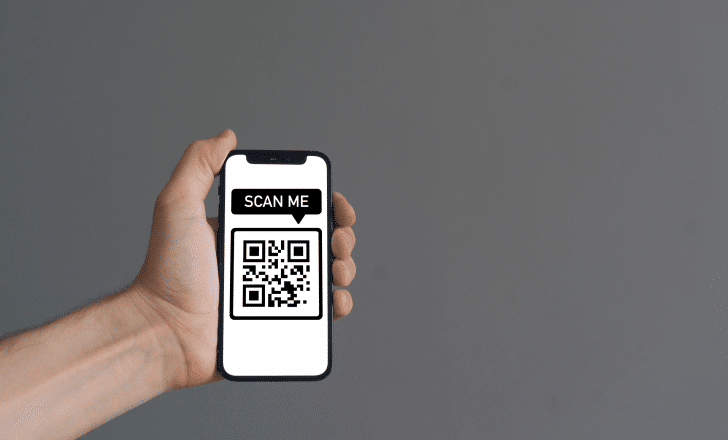
Link management platforms: Enhancing QR code utility
Link management platforms play a crucial role in the QR code ecosystem by allowing creators to track scans, manage the content linked to QR codes, and analyze user engagement.
These platforms provide valuable insights into how, when, and where QR codes are used, enabling businesses to refine their strategies and improve user interaction. They also allow for the QR codes to be updated dynamically without needing to regenerate and redistribute the physical or digital media where the QR code appears, making them an excellent tool for campaigns that require flexibility.
The technological underpinnings of QR codes facilitate a broad range of applications and open the door for future advancements that could transform how we interact with our physical and digital environments.
As we continue to integrate technology into every aspect of daily life, QR codes stand as a testament to how simple concepts can evolve into critical tools for modern communication and business practices. As technology progresses, we can expect QR codes to become even more integral to our digital experiences, powered by advancements in AI and link management systems.
Market trends
As QR codes become increasingly integrated into both personal and professional realms, their influence on market trends is unmistakable. From adoption rates to innovative applications, QR codes are shaping the way businesses and consumers interact with technology.
QR code adoption rates
The adoption of QR codes has seen a steady increase, particularly highlighted by the surge in use during recent global events that prompted contactless interactions.
“QR code payment technology has been adopted widely across various sectors including retail, healthcare, and education, driven by its ease of use and versatility. Market analysis shows that as more businesses recognize the benefits of QR codes in engaging customers and streamlining operations, adoption rates continue to climb.
Increased QR code adoption: Analyzing the surge
The surge in QR code adoption can be attributed to several factors. The COVID-19 pandemic, for instance, accelerated the use of QR codes as businesses sought contactless methods to interact with customers.
Restaurants replaced physical menus with QR codes, retailers used them for touch-free payments, and service providers incorporated them for safe check-ins. This trend is supported by consumer readiness to adopt digital solutions for everyday tasks, reflecting a shift in societal norms towards more technologically driven interactions.
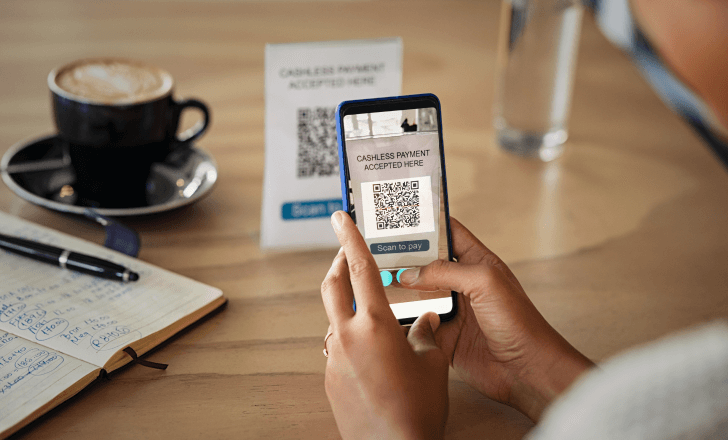
QR code downloads: Metrics and insights
The number of QR code scanner and generator downloads has provided concrete data reflecting this trend. QR code usage statistics, especially during the COVID-19 pandemic, indicate a significant increase in downloads of QR code generator-related applications, suggesting not only increased usage but also a greater comfort level with this technology among the general population. Businesses and marketers are leveraging these insights to develop more targeted strategies that incorporate QR codes into their customer engagement and operational models.
QR codes continue to impact market trends significantly, influenced by global shifts towards digital and contactless solutions. As technology advances, the potential for QR codes expands, suggesting that their role in daily life and business operations will only grow stronger.
By understanding these trends, businesses can better align themselves with consumer expectations and technological developments, ensuring they remain competitive in a rapidly evolving digital landscape.
The future of QR codes
As QR codes carve out a substantial niche in various industries, their future looks promising with evolving applications and technological enhancements. This future is shaped by current trends, emerging technologies, and changing consumer behaviors, pointing towards even more innovative and expansive uses.
QR code forecasts: What’s next?
The future of QR codes is expected to be driven by continuous technological innovations and an increasing integration into the Internet of Things (IoT).
With smart devices becoming more prevalent, QR codes could serve as the bridge between physical objects and digital interfaces, enhancing the functionality of smart homes, smart cities, and personalized consumer experiences.
Future QR codes might carry more dynamic content and offer greater interactivity, adapting to user preferences and contexts.
Emerging trends in QR code technology
Emerging trends include the development of more secure and sophisticated QR codes to prevent fraud and enhance privacy.
Enhanced encryption and embedded security features could make QR codes a more reliable tool for sensitive transactions, such as in banking and personal identification.
Additionally, augmented reality (AR) might integrate with QR codes to provide immersive experiences directly from scanning a QR code, such as virtual try-ons, interactive learning environments, and enriched tourist experiences.
QR code solutions: Innovating for the future
As businesses continue to seek efficient and engaging ways to connect with customers, QR code solutions are becoming increasingly sophisticated.
Custom QR code campaigns that track user engagement and provide actionable analytics are on the rise. These solutions not only help businesses tailor their offerings but also enhance user engagement through personalized and context-aware content delivered instantly to the user’s smartphone.

Digital menus to contact tracing: Expanding use cases
The versatility of QR codes allows them to adapt to a wide range of uses beyond just linking to websites or digital menus.
In public health, QR codes are being utilized for contact tracing to combat the spread of viruses. In entertainment and events, they provide access control and digital content sharing.
As global economies look towards more sustainable practices, QR codes are also playing a role in environmental sustainability by reducing the need for printed materials and enhancing the recyclability of connected packaging.
The trajectory of QR code technology points to a future where they are more deeply integrated into both personal and professional aspects of life.
This future is not just about maintaining the status quo but expanding it to harness the full potential of digital connectivity. As QR codes continue to evolve, they will undoubtedly play a pivotal role in shaping the next generation of digital interaction and data exchange.
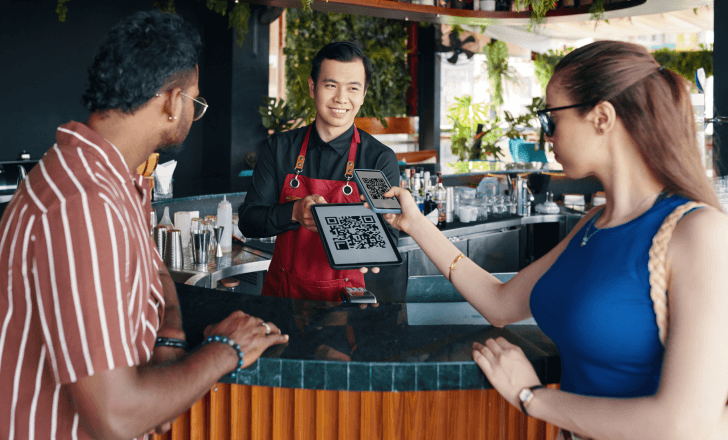
Replacing QR codes
While QR codes currently enjoy widespread use and are embedded in various aspects of daily life and business operations, the relentless pace of technological innovation suggests that newer technologies could eventually supplement or replace QR codes. Exploring what might succeed QR codes involves examining current limitations and future technological trends.
What technology could replace QR codes?
Emerging technologies that could potentially replace QR codes include Near Field Communication (NFC) and augmented reality (AR) interfaces.
NFC, for example, allows for wireless communication between devices over short distances without the need for scanning. This technology is already being used for mobile payments and could expand to other applications currently served by QR codes, offering a more seamless and interactive user experience.
Augmented reality presents another frontier. Unlike QR codes, which require a specific focus and scanning action, AR can overlay digital information directly onto the physical world as viewed through a camera, providing a more integrated and interactive experience.
This could lead to a natural evolution from static QR code scanning to dynamic content interaction within the user’s immediate environment.
Beyond QR codes: The evolution of digital interaction
As digital interaction evolves, the integration of AI with NFC and AR could lead to systems that not only transmit information but also adapt to the user’s immediate needs and historical interactions.
Imagine walking up to a product in a store and having personalized information and offers displayed on your mobile device without needing to scan anything, facilitated by AI-driven AR and NFC technologies.
Additionally, blockchain technology could enhance how information accessed via these new methods is secured and verified, ensuring authenticity and protecting privacy better than ever before. This integration could redefine security standards for digital payments and interactions in the retail and service sectors, among others.
The potential replacement of QR codes does not signify their immediate obsolescence but rather indicates a transition towards more fluid, secure, and interactive forms of digital communication. As these technologies develop, they may offer enhancements that QR codes cannot, primarily in terms of user engagement and security.
However, until these technologies become more pervasive and cost-effective, QR codes will likely remain a staple due to their simplicity, ease of implementation, and broad compatibility.
Challenges and considerations
Despite the active and widespread usage, adoption and many benefits of QR codes, there are several challenges and considerations that need addressing to enhance their efficacy and user experience. Addressing these issues is crucial for maintaining QR code relevance and ensuring their safe and effective use across various sectors.
Security concerns with QR codes
QR codes are not inherently secure and can be used as a vector for cyber threats.
Malicious QR codes can direct users to harmful websites, initiate unauthorized downloads, or even breach personal data. As QR codes become more prevalent, ensuring that they are generated from a trusted source and that users are educated about safe scanning practices is vital.
Enhancing security measures such as adding encryption or verification layers can help mitigate these risks.
User experience: Making QR code use seamless
While scanning a QR code is generally straightforward, the user experience can sometimes be less than ideal.
Poorly generated QR codes, or those placed in hard-to-scan locations, can frustrate users.
Additionally, the reliance on a few unique mobile phone users’ device’s camera and external lighting conditions can affect the scanning success. Improving the design and placement of QR codes, as well as ensuring they are compatible with a wide range of devices and scanning conditions, will be important for maintaining user satisfaction.

Accessibility issues: Ensuring inclusivity
Accessibility remains a significant concern with QR codes. Not everyone has a smartphone or the knowledge to use QR codes effectively, which can lead to exclusion and frustration.
Ensuring that there are alternative methods for accessing the same information or services provided by QR codes is crucial for inclusivity.
Additionally, providing clear instructions and assistance for first-time or infrequent internet users can help make QR codes more accessible to a broader audience.
Addressing these challenges requires a concerted effort from technology developers, businesses, and regulatory bodies to ensure that QR codes continue to serve as a valuable tool for digital interaction.
By enhancing security, improving user experience, and ensuring accessibility, QR codes can remain relevant and beneficial in an increasingly digital world.
QR codes in business
QR codes have become a pivotal tool in the business landscape, offering an array of functionalities that streamline operations, enhance customer engagement, and open new marketing avenues. The integration of QR codes into business strategies reflects an understanding of their potential to impact sales, customer experience, and operational efficiency.
QR code payments: A deeper dive
QR code payments have revolutionized how transactions are conducted in both retail and service sectors. By enabling a contactless, secure, and quick payment option, QR codes help businesses reduce transaction times and improve the customer experience.
For businesses, this means less reliance on physical payment systems and the ability to handle high volumes of transactions efficiently, especially in peak times. The adoption of QR code payments also aligns with the growing consumer preference for digital wallets and mobile payments.
QR codes in marketing campaigns
In marketing, QR codes offer a unique way to bridge offline and online worlds. By embedding QR codes in print advertising, billboards, or even product packaging, businesses can direct consumers to online resources, enhancing the interactive aspect of traditional marketing materials.
This can lead to increased consumer engagement, higher traffic to online platforms, and improved tracking of campaign effectiveness.
QR codes can also be used in personalized marketing, where specific codes lead to customized content based on previous consumer interactions, thereby enhancing the relevance and effectiveness of marketing efforts.

QR codes for discount coupons and offers
Businesses frequently use QR codes to distribute discount coupons and special offers.
This tactic not only drives sales but also helps in customer acquisition and retention by providing a tangible incentive that is easy to access and use. QR codes can be specifically targeted and distributed through various channels, such as social media, email marketing, or physical locations, providing a versatile tool for promotional strategies.
The ability to track redemption rates and user engagement through these codes offers valuable insights into consumer behavior and campaign performance.
Through these various applications, QR codes serve as a critical component in modern business practices, helping companies navigate the complexities of the digital marketplace.
By leveraging the versatility and connectivity of QR codes, businesses can enhance their operational efficiencies, deepen customer relationships, and drive more targeted and successful marketing strategies.
Consumer interaction
QR codes have reshaped consumer interactions by providing instantaneous access to information, enhancing user engagement, and simplifying transactions. The integration of QR codes into daily consumer activities illustrates their adaptability and effectiveness in meeting modern consumer demands.
How consumers are using QR codes today
Consumers today encounter QR codes in a variety of settings, which has greatly increased their interaction with the technology.
Whether it’s accessing a restaurant menu, checking in at an event, downloading an app directly from a poster, or participating in a scavenger hunt, QR codes make these interactions smooth and hassle-free.
This versatility has not only improved the user experience but has also increased the reliance on QR codes for a broad spectrum of activities, enhancing consumer convenience and accessibility.

Scanning QR codes: User behavior
The behavior of consumers towards QR codes reveals a trend towards increased acceptance and usage. Consumers are more likely to scan a QR code if it promises immediate value, such as a discount, additional product information, or a novel experience.
This behavior underscores the importance of context and presentation in QR code deployment—codes that are easy to scan and clearly explain the value they unlock tend to see higher engagement rates. Businesses harnessing QR codes need to ensure that they are strategically placed and promoted to maximize consumer interaction.
The shift from physical to digital menus
A significant shift in consumer interaction with QR codes can be observed in the hospitality industry, where digital menus have largely replaced traditional physical menus.
This shift not only meets the demand for safer, contactless dining options but also caters to the growing consumer preference for digital solutions. Digital menus offer diners the flexibility to browse options, place orders, and make payments directly from their smartphones, leading to a streamlined dining experience.
This transition also benefits businesses by allowing for real-time menu updates and reducing printing costs, demonstrating a mutually beneficial advancement in consumer interaction.
By enhancing direct engagements and providing a gateway to digital content and services, QR codes have become a key component in the evolution of consumer interaction.
Their ability to connect the physical and digital worlds seamlessly makes them a powerful tool in enriching consumer experiences and meeting the expectations of a tech-savvy population.
Global implications
QR codes have transcended local boundaries, having a profound impact on global commerce, communication, and connectivity. Their universal applicability and ease of use make them a valuable tool in international markets, shaping global trends in digital interaction and transactional behaviors.
QR codes and global smart packaging
In the global smart packaging market, QR codes are pivotal in transforming packaging into a dynamic communication tool.
Brands utilize QR codes on packaging to provide consumers worldwide with enhanced product information, authenticity verification, and engagement experiences directly through their mobile devices.
This usage not only improves consumer trust and brand loyalty but also enables companies to track products through the supply chain, ensuring transparency and security in international commerce.

Contactless payments: A global trend
QR code-based payments have become a standard method for transactions worldwide, particularly prominent in Asia where they are integral to daily commerce.
This trend is spreading globally as consumers and businesses alike seek faster, safer, and more convenient payment methods. QR codes facilitate these demands by offering a universal solution that can be implemented with minimal infrastructure changes, thus supporting the growth of digital economies across different regions.
QR codes and mobile payment systems worldwide
The integration of QR codes with mobile phones and payment systems has revolutionized how transactions are conducted globally.
In countries with high mobile penetration but lower access to traditional banking services, QR codes provide an accessible alternative for financial transactions, bridging the gap in financial inclusivity.
This has significant implications for economic activity in developing regions, where QR code payments can empower small businesses and consumers by integrating them into the digital economy.
These global implications of QR codes illustrate their role not just in enhancing individual user experiences but in fostering larger scale economic and informational connectivity.
As QR codes continue to evolve and adapt to new technologies and markets, their influence on global digital practices is expected to grow, further integrating the world into a cohesive digital ecosystem.

Summary and conclusions
QR codes have evolved significantly from their initial use in automotive tracking to become a ubiquitous tool in global digital interaction.
This transformation reflects their versatility, ease of use, and adaptability to various user needs and technological advancements. The exploration of QR codes throughout this guide underscores their integral role in modern society and points to a promising future with expanding applications.
The enduring relevance of QR codes
Despite potential future competition from emerging technologies like NFC and augmented reality, QR codes maintain a strong presence due to their simplicity and widespread compatibility with existing mobile devices.
Their ability to quickly bridge the gap between physical and digital realms without significant infrastructure investment continues to drive their adoption in diverse sectors, from retail and marketing to healthcare and public administration.
Key takeaways on QR code trends

QR codes have demonstrated remarkable resilience and growth, driven by the demand for efficient, contactless, and secure methods of information exchange and transaction processing.
Their rapid adoption during recent global events has proven their utility in public health and safety applications, showcasing their potential to serve critical societal needs.
Moreover, innovations in QR code technology, such as integration with AI and enhanced security features, are poised to expand their applications even further.
Final thoughts: The QR code journey
As we look to the future, the journey of QR codes is far from complete. Their ability to adapt to user needs and technological shifts suggests that QR codes will continue to evolve and perhaps become more ingrained in our digital interactions.
Businesses and consumers alike should remain attuned to the developments in QR code technology and usage, as they will undoubtedly influence the landscape of digital communication, marketing, and transaction methodologies.
In conclusion, QR codes are more than just a transient technological trend; they are a pivotal element in the ongoing convergence of the physical and digital worlds, offering simplicity, efficiency, and connectivity.
As we continue to navigate the complexities of digital transformation, QR codes serve as a vital tool, ensuring accessibility and engagement in our increasingly digital lives.

